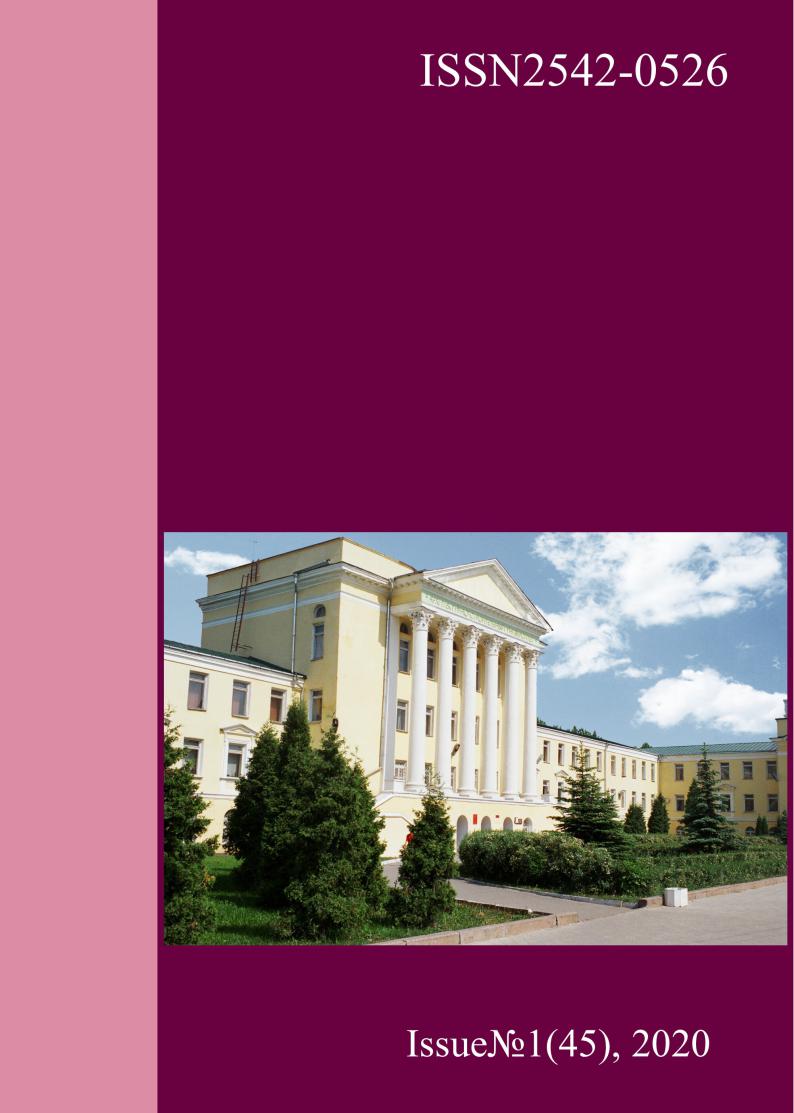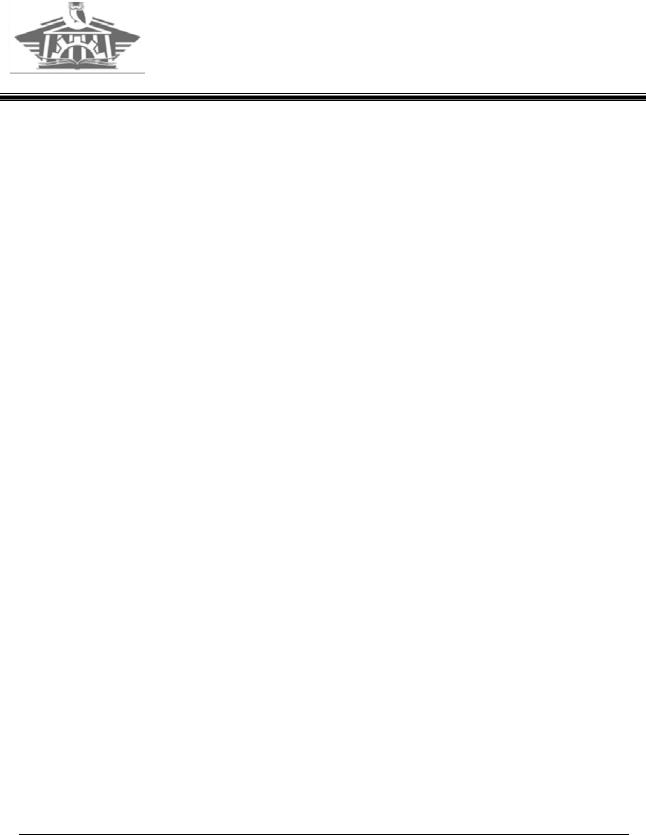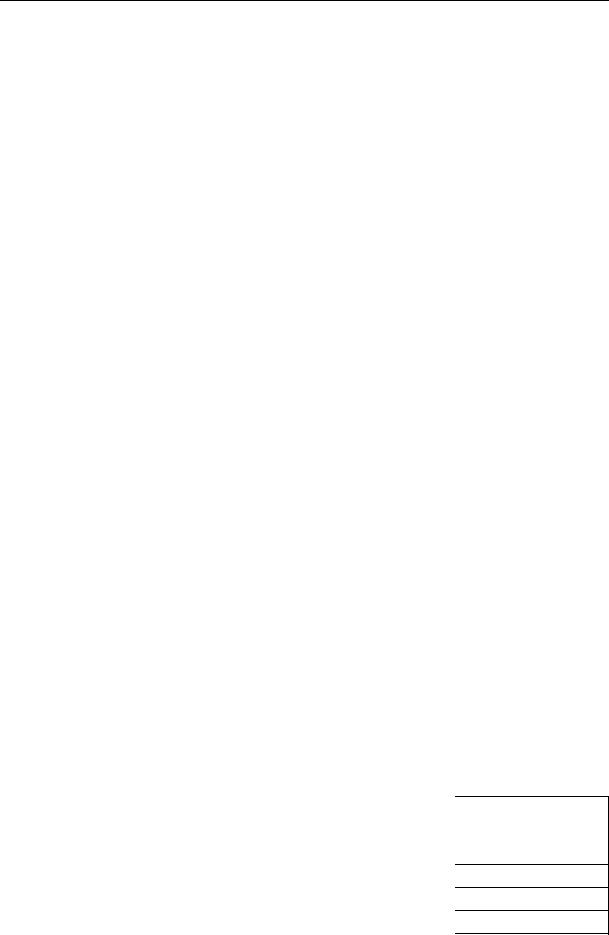
Russian Journal of Building Construction and Architecture
.pdf
RUSSIAN JOURNAL
OF BUILDING
CONSTRUCTION AND ARCHITECTURE
1

The journal is indexed/abstracted in:
Web of Science Core Collection
(Emerging Sources Citation
Index)
(Thomson Reuters), USA
Ulrich's Periodicals Directory
(Bowker), USA,
DOAJ
(Lund University), Sweden,
Academic Search Complete
(EBSCO), USA,
SOCOLAR
(China Educational Publications Import and Export Corporation –– CEPIEC), China,
Google Scholar
(Google), USA,
E-Library
(ООО «РУНЭБ»), Russia,
J-Gate
(Informatics Ltd), India
2
ISSN 2542-0526
RUSSIAN JOURNAL
OF BUILDING
CONSTRUCTION AND ARCHITECTURE
N 1 (45)
BUILDING STRUCTURES, BUILDINGS AND CONSTRUCTIONS
BASES AND FOUNDATIONS, UNDERGROUND STRUCTURES
HEAT AND GAS SUPPLY, VENTILATION, AIR CONDITIONING, GAS SUPPLY AND ILLUMINATION
BUILDING MATERIALS AND PRODUCTS
TECHNOLOGY AND ORGANIZATION OF CONSTRUCTION
DESIGNING AND CONSTRUCTION OF ROADS, SUBWAYS, AIRFIELDS, BRIDGES AND TRANSPORT TUNNELS
BUILDING MECHANICS
THEORY AND HISTORY OF ARCHITECTURE, RESTORATION AND RECONSTRUCTION OF HISTORICAL
AND ARCHITECTURAL HERITAGE
ARCHITECTURE OF BUILDINGS AND STRUCTURES. CREATIVE CONCEPTIONS OF ARCHITECTURAL ACTIVITY
CITY PLANNING, PLANNING OF VILLAGE SETTLEMENTS
Voronezh 2020
3

Russian Journal
of Building Construction and Architecture
Periodical scientific edition
Published since 2009 |
Comes out 4 times per annum |
Founder and publisher: Federal State Education Budget Institution of Higher Professional Education «Voronezh State Technical University».
The articles are reviewed and processed with the program ANTIPLAGIARISM. This publication cannot be reprinted without the prior permission of the publisher, references are obligatory.
Number of the certificate of registration of the media ПИ № ФС 77-67855
Issued by the Federal Service for Supervision of Communications, Information Technology, and Mass Media (Roskomnadzor)
Price is subject to change
EDITORIAL COUNCIL
The Head of the Council: Kolodyazhny S. A., D. Sc. in Engineering, rector (Voronezh State Technical University)
EDITORIAL BOARD
Editor-in-Chief: Melkumov V. N., D. Sc. in Engineering, Prof.
(Voronezh State Technical University)
Members:
Boldyrev А.М., Corresponding Member of the Russian Academy of Architecture and Engineering Science, D.Sc. in Engineering, Prof., Voronezh State Technical University, Russia
Bondarev B. А., D. Sc. in Engineering, Prof., Lipetsk State Technical University, Russia
Gagarin V. G., Corresponding Member of RAABS, Moscow State University of Civil Engineering, Russia
Gelfond А. L., Corresponding Member of the Russian Academy of Architecture and Construction Science, D. Sc. in Architecture, Nizhniy Novgorod State University of Architecture and Construction, Russia
Enin A. Ye., PhD in Architecture, Prof., Voronezh State Technical University, Russia
Karpenko N. I., Academician of RAABS, Research Institute of Building Physics (NIISF RAABS), Russia
Kirsanov М.N., D.Sc. in Physics and Mathematics, Professor (National Research University “Moscow Power Engineering Institute”)
Kobelev N. S., D. Sc. in Engineering, Prof., Southwest State University, Kursk, Russia
Kolchunov V. I., Academician of RAABS, Southwest State University, Kursk, Russia
Ledenyev V. I., D. Sc. in Engineering, Prof., Tambov State Technical University, Russia
Lyahovich L. S., Academician of RAABS, Tomsk State University of Architecture and Building, Russia
Mailyan L. R., D. Sc. in Engineering, Prof., Don State Technical University, Rostov, Russia
Panibratov Yu. P., Academician of RAABS, Saint Petersburg State University of Architecture and Civil Engineering, Russia
PodolskyVl.P.,D. Sc. in Engineering, Prof., Voronezh State Technical University, Russia (Dep. of the Editor-in-Chief)
SlavinskayaG.V.,D. Sc. in Chemistry, Prof, Voronezh State Technical University, Russia
SuleymanovА.М.,D. Sc. in Engineering, Prof., Kazan State University of Architecture and Engineering, Russia
Fyedorov V. S., Academician of RAABS, Moscow State University of Railway Engineering, Russia
Fedosov S. V., Academician of RAABS, Ivanovo State Polytechnic University, Russia
Chernyshov Ye. M., Academician of RAABS, Voronezh State Technical University, Russia
Shapiro D. M., D. Sc. in Engineering, Prof., Voronezh State Technical University, Russia
Shubenkov М. V., Academician of the Russian Academy of Architecture and Construction Science, D. Sc. in Architecture, Prof., Моscow Institute of Architecture (State Academy), Russia Asanowicz Alexander, Prof., Dr. of Sn., Technical University of Bialystok, Poland
Figovsky Oleg L., Prof., Dr. of Sn., Member of EAS, Israel Korsun V. I., D. Sc. in Engineering, Prof., The Donbas National Academy of Civil Engineering and Architecture, Ukraine Nguyen Van Thinh, Prof., Dr. of Sn., Hanoi University of Architecture, Vietnam
Editor: Kotlyarova E. S. |
Translator: Litvinova O. A. |
THE ADDRESS of EDITORIAL AND THE PUBLISHER OFFICE: 84 20-letiya Oktyabrya str., Voronezh, 394006, Russian Federation Tel./fax: (473)2-774-006; e-mail: vestnik_vgasu@mail.ru
Publication date 03.02.2020. Format 60×84 1/8. Conventional printed sheets 13,02. Circulation 500 copies. Order 000.
Published in Printing Office of Voronezh State Technical University 84 20-letiya Oktyabrya str., Voronezh, 394006, Russian Federation
ISSN 2542-0526 |
© Voronezh State Technical |
|
University, 2020 |
4
CONTENTS |
|
BUILDING STRUCTURES,BUILDINGS AND CONSTRUCTIONS ................................................... |
6 |
Mailyan L. R., Stel'makh S. A., Shcherban' E. M., Kholodnyak M. G. |
|
Determination and Use of Hidden Strength Reserves of Centrifuged Reinforced |
|
Constructions by Means of Calculation and Experimental Methods......................................... |
6 |
BUILDING MATERIALS AND PRODUCTS.................................................................................. |
15 |
Saydan Murat, Keskin Ülkü Sultan, Kansun Gursel |
|
The Effects of Petrographic Differences on the Geomechanical Properties |
|
and Freeze-Thawing (F-T) Processes of Building Stones Used in Aya Helena Church |
|
(Sille / Konya / Turkey) ........................................................................................................... |
15 |
TECHNOLOGY AND ORGANIZATION OF CONSTRUCTION ....................................................... |
28 |
Mishchenko V. Ya., Gorbaneva E. P., Sevryukova K. S. |
|
Foreign and Russian Experience Conducting Major Repairs |
|
of Housing Fund Taking Into Account Energy-Efficient Measures........................................ |
28 |
DESIGNING AND CONSTRUCTION OF ROADS,SUBWAYS,AIRFIELDS, |
|
BRIDGES AND TRANSPORT TUNNELS .................................................................................... |
42 |
Piletskii M. E., Andrianov K. A., Zubkov A. F. |
|
Influence of the Load-Carrying Capacity of Vehicles when Performing Repair Works |
|
of Road Pavements by Means of the Jet-Injection Method ..................................................... |
42 |
Samodurova T. V., Gladysheva O. V., Alimova N. Yu., Peregudova V. N. |
|
Monitoring of Snowfilling Roads Sections — Information Modeling.................................... |
55 |
Senibabnov S. A., Andrianov K. А., Zubkov A. F. |
|
Analysis of Normative Documentation on the Calculation of the Strength Characteristics |
|
of Non-Rigid Road Pavement for the Permissible Elastic Deformation.................................. |
66 |
Shtefan Y. V., Bondarev B. A. |
|
Risk Management in Requirements of the ISO Standards in Relation to Logging Roads....... |
85 |
BUILDING MECHANICS............................................................................................................ |
98 |
Eremin V. G., Kozlov A. V. |
|
Analytical Expressions, Taking Into Account the Shift Between the Concrete |
|
and Steel Structural Elements of Bridges in Continuous Multi-Span Beams.......................... |
98 |
INSTRUCTIONS TO AUTHORS................................................................................................. |
111 |
5

Russian Journal of Building Construction and Architecture
BUILDING STRUCTURES,BUILDINGS AND CONSTRUCTIONS
DOI 10.25987/VSTU.2020.45.1.001 UDC 624.012.4624.012.4
L. R. Mailyan 1, S. A. Stel'makh 2, E. M. Shcherban' 3, M. G. Kholodnyak 4
DETERMINATION AND USE OF HIDDEN STRENGTH RESERVES OF CENTRIFUGED REINFORCED CONSTRUCTIONS
BY MEANS OF CALCULATION AND EXPERIMENTAL METHODS
Don State Technical University 1, 2, 3, 4
Russia, Rostov-on-Don
1 Corresponding Member of RAACS, D. Sc. in Engineering, Prof. of the Dept. of Reinforced Concrete and Stone Structures, e-mail: mailyan@sroufo.ru
2 PhD in Engineering, Assoc. Prof of the Dept. of Engineering Geology, Bases and Foundations, e-mail: sergej. stelmax@mail.ru
3 PhD in Engineering, Assoc. Prof of the Dept. of Engineering Geology, Bases and Foundations, tel.: +7-928-193-76-37, e-mail: au-geen@mail.ru
4 Engineer of the Dept. of Technology of Binders, Concretes and Building Ceramics, e-mail: xolodniak@yandex.ru
Statement of the problem. When centrifuging elements with a sufficiently thick wall, the effect of centrifugal and centripetal forces acting on different internal layers of the cross section varies greatly, which leads to a significant difference in the structure, physical, mechanical and structural characterristics of concrete layers, which in some cases must be taken into account in the calculations. It becomes possible to use substantial reserves of structural strength that can be determined by means of calculation and experimental methods. The paper posed and solved the problem of identifying the difference in pro-perties and characteristics of layers of centrifuged reinforced concrete structures, its analytical description, adjusting the strength calculation methods to account for this and comparing them with the existing regulatory methods for calculating strength in the current regulations.
Results and conclusions. A model of a three-layer variotropic structure of a centrifuged structure is proposed, its substantiation, expediency and efficiency are experimentally confirmed. When comparing the methods of calculating standard centrifuged reinforced concrete columns, it was concluded that the values of their strength calculated based on the integral (generalized) and differential (layered) characteristics differ significantly. The previously hidden latent reserves of industrial columns of the variotropic structure produced by centrifuging methods are not analytically identified.
Keywords: centrifuged reinforced concrete structures, variotropic properties of sections, layers of concrete, calculation of the strength of building structures, integral and differential characteristics of centrifuged concrete.
Introduction. The centrifugation method for the production of circular elements has proven highly efficient in a variety of structures. Extensive experience has been gained in the manu-
© Mailyan L. R., Stel'makh S. A., Shcherban'E. M., Kholodnyak M. G., 2020
6
Issue № 1 (45), 2020 |
ISSN 2542-0526 |
facture of centrifuged reinforced concrete elements of the circular section, i.e., pipes, electricity transmission supports, lighting masts and contact network supports, columns of oneand multi-storey buildings, etc.
The analysis shows that the method of centrifugation in the molding of products from highstrength concrete is easy to employ, does not require sophisticated equipment and is highly efficient. At its current stage of development, the centrifugation technology is being continuously improved.
The use of the centrifugation methods such as layer-by-layer molding, centrifugal rolling, cyclic centrifugation, combining centrifugation of a concrete mix by means of vibration and rolling, reverse centrifugation, modification of centrifuged concrete with complex chemical additives and the like, allows us to tackle the production of high-strength concrete for heavily loaded columns [1, 9––11, 13].
1. The theoretical basis for the formation of centrifuged concrete structure. When centrifuging elements with a sufficiently thick wall, centrifugal and centripetal forces acting on different (external and internal) layers of the cross section are significantly different, which leads to a considerable difference in the structure and physical and mechanical as well as structural characteristics of the layers of the element, which in some cases must be accounted for in calculations [2––4, 14, 15].
Manufacturing elements by centrifugation [11] involves the mold with a concrete mix rotating around a fixed axis, a compressive centrifugal pressure occurs resulting in a liquid being squeezed from a cement gel with highly dispersed fractions suspended in it and larger particles of the solid phase coming together. Such a concrete during single-layer molding without plasticizing additives differs from concrete manufactured by means of vibration compaction as it has the property of inhomogeneous distribution of aggregate grains over the product wall thickness, since larger grains are squeezed to the outer surface by the inertia forces and smaller grains to the inner one.
Therefore the disadvantages of centrifuged concrete during single-layer molding commonly include its cross-section anisotropy and change in strength characteristics along the thickness of a wall [16, 17]. However, some questions arise: first of all, whether this is a drawback at all and, second of all, how this phenomenon can possibly be taken advantage of for calculating and designing centrifuged structures. In the process of manufacturing samples on a belt centrifuge during single-layer molding, I. N. Akhverdov [1] identified the following structural anisotropy of concrete:
–– on the outer surface, the most dense water is squeezed out and the cement paste is densified;
7

Russian Journal of Building Construction and Architecture
––in the middle part of the section, a significant heterogeneity of the cement stone is caused by radial filtration channels in it, their dimensions of the section and the number increase from the outer to the inner surface of a product;
––as they approach the inner surface of the product, the microcapillaries are connected and form macrocapillaries, which then form a system of dispersed ducts that disappear due to dilution of a cement gel with water displaced from the upper zones.
All of these lead to the fact that the structure and strength of the same centrifuged concrete varies in thickness. As a result, there is what is now referred to as variatropia.
The data obtained by V. P. Petrov [12] showed that after being centrifuged for 20 minutes, the strength difference between the outer I and middle II concrete layers is 7.6 % and between the outer I and inner III concrete layers it is 20.1 %.
Moreover, the strength of centrifuged concrete of layers I and II was higher than that of similar vibrated concrete, and was lower in layer III. At the same time, the porosity in all of the zones of centrifuged concrete was lower than that of vibrated concrete. The experimental results [12] are presented in Table 1 and 2.
|
|
|
|
Таble 1 |
|
|
|
Results of the tests of centrifuged concrete |
|
||
|
|
|
|
|
|
|
Compressive |
Variation |
Water absorption according |
Porosity |
|
Layer |
to the GOST (ГОСТ) |
according to the GOST |
|||
strength limit, МPа |
coefficient, % |
||||
|
|
|
12730.3-78, % |
(ГОСТ) 12730.4-78, % |
|
|
|
|
|
|
|
I |
50.2 |
6.3 |
2.9 |
6.96 |
|
|
|
|
|
|
|
II |
46.4 |
9.8 |
4.3 |
10.32 |
|
|
|
|
|
|
|
III |
40.1 |
14.2 |
6.0 |
14.40 |
|
|
|
|
|
|
|
Similarly, the vibrated samples were cut with a 3 cm rib in order to identify the tensile strength, water absorption and porosity of various concrete zones.
|
|
|
|
Таble 2 |
|
|
|
Results of the tests of vibrated concrete |
|
||
|
|
|
|
Porosity |
|
|
Compressive |
Variation |
Water absorption according |
||
Layer |
to the GOST (ГОСТ) |
according to the GOST |
|||
strength limit, МPа |
coefficient, % |
||||
|
|
|
12730.3-78, % |
(ГОСТ) 12730.4-78, % |
|
|
|
|
|
14.88 |
|
I |
44.5 |
3.5 |
6.2 |
||
|
|
|
|
15.12 |
|
II |
43.7 |
3.6 |
6.3 |
||
|
|
|
|
15.12 |
|
III |
43.2 |
4.1 |
6.3 |
||
|
|
|
|
|
|
8
Issue № 1 (45), 2020 |
ISSN 2542-0526 |
The circular sections were cut into layers, that were used to prepare cube samples with the edge of 2 cm, the strength, water absorption and porosity of concrete of various layers of the circular section were determined using them.
Based on the above data, the research problem was hypothesized and formulated. While calculating and designing centrifuged reinforced concrete structures, significant strength reserves are not considered and can be analytically determined by means of calculation and experimental methods.
2. Calculation and experimental methods for identifying the strength reserves of centrifuged reinforced concrete structures. In order to address the research problem, we set the task of comparing different methods for calculating centrifuged reinforced concrete structures, both existing in the existing guidelines and regulations (СП) and proposed by the authors in compliance with the experimental data [5, 18––20]].
The experimental structures in their circular cross section were variative, i.e., a combination of layers of the same material, with the properties and characteristics different from each other due to centrifugation.
Hence after the integral (generalized) concrete strength of centrifuged reinforced concrete structures of the circular section had been identified, we investigated the differential (layer- by-layer) concrete strength associated with the variability of its structure in the process of centrifugation.
The analysis of the experimental results showed that in accordance with theoretical calculations, the outer layer of the centrifuged circular structure, which is subjected to the maximum centrifugal force, has the greatest strength and the inner layer has the least strength.
The graph of changes in the strength of centrifuged concrete from layer to layer (from the external to the internal one) takes the form of a downward straight with a downward convexity (Fig. 1).
Thus, the substantiation and expediency of the three-layer model of the variatropic structure of the centrifuged structure are experimentally proved.
A significant difference is also characteristic in the elastic moduli of the layers of such a threelayer structure. The concrete of the outer layer has the largest modulus of elasticity whereas the concrete of the inner layer has a minimum modulus of elasticity, which is also indicative of the variability of the structure and the three-layer model of the centrifuged structure (Fig. 2).
The deformation diagrams of centrifuged concrete also vary considerably across the layers thus confirming the variability of the structure of such concrete. Among all of the diagrams,
9
